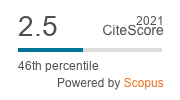A Mixed-Stable Approach to the Management of the Portfolio Using High-Frequency Financial Data
DOI:
https://doi.org/10.5755/j01.itc.46.3.16766Keywords:
financial modelling, generalized power-correlation, portfolio selection, high-frequency data, mixed-stable modelAbstract
In this paper, we are focusing on the construction of a portfolio, using high-frequency financial series. Such series often exibit the stagnation effect. This effect causes a lot of unusual difficulties in the analysis and the modeling. In clasical economical statistics, when distributional law have two first moments, i.e. mean and variance, relations betwen two random variables (returns) are described by covariance or corelation. But if we assume that the financial data follow the stable law (empirical studies suport this asumption), covariance and especialy correlation cannot be calculated. Dealing with the portfolio selction problem there were suggested alternative relation measures: generalized power-correlation measures. To select optimal portfolio we solve optimization problem replacing the covariance by the generalized power-correlation. Portfolio construction strategies with and without relationship coefficients matrix are presented. We compare the performance of mixed-stable model with alternative approaches. To illustrate the modeling we use German DAX index intra-daily data.Downloads
Published
2017-09-07
Issue
Section
Articles
License
Copyright terms are indicated in the Republic of Lithuania Law on Copyright and Related Rights, Articles 4-37.





